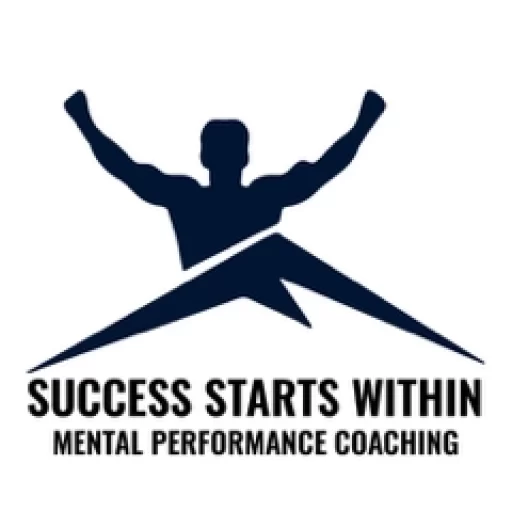When you think about your best performances as an athlete, were you focused, dialed in, and present? Or were your thoughts scattered, pulled between notifications, messages, and the overwhelming pressure of social media?
In today’s hyper-connected world, screens dominate our attention. From smartphones and tablets to laptops and smartwatches, technology is ingrained in daily life. For athletes, the same tools that offer access to training tips and inspiration can also become distractions, resulting in anxiety and poor mental focus.
As a mental performance coach, I’ve worked with many athletes who struggle with tech-driven stress.
By implementing a tailored digital detox, you can reclaim your focus, reduce anxiety, and improve performance. In this article, we’ll explore how excessive screen time impacts athletes and the steps you can take to detox from digital distractions.
The Impact of Technology on Athletes
Technology can be a double-edged sword. While it provides opportunities to track progress, study competitors, and connect with others, it also has downsides—especially when used without boundaries.
Here are some ways excessive tech use affects athletes:
- Mental Fatigue: Scrolling through endless social media posts, replying to messages, and consuming content can overstimulate your brain. This constant input doesn’t just exhaust your mind; it also leaves little room for recovery and focus.
- Social Media Pressure: Athletes often face immense pressure to maintain a certain image online. The comparison game where you’re constantly seeing other athletes’ highlight reels can lead to feelings of inadequacy and self-doubt, fueling performance anxiety.
- Disrupted Sleep Patterns: Blue light emitted by screens can interfere with your body’s production of melatonin, a hormone that regulates sleep. Late-night screen time can lead to poor sleep quality, which directly impacts recovery and performance.
- Reduced Focus: Constant notifications and multitasking make it harder to focus during training and competitions. The more you allow your attention to be divided, the harder it becomes to concentrate fully on your sport.
- Emotional Overload: Negative comments, trolling, and online criticism can take a toll on an athlete’s emotional well-being. Even positive feedback, when excessive, can create pressure to meet unrealistic expectations.
- Diminished Enjoyment of Sport: When performance becomes intertwined with social media validation, the intrinsic joy of competing can fade. Athletes may feel more pressure to perform for likes and comments rather than for personal satisfaction.
Why Athletes Need a Digital Detox
A digital detox doesn’t mean eliminating technology entirely. Instead, it’s about creating healthier habits and boundaries. Here’s why a digital detox is essential for athletes:
- Reclaim Mental Space: A detox helps clear your mind, allowing you to focus on training and competition.
- Reduce Anxiety: By limiting exposure to social media and notifications, you can decrease feelings of stress and pressure.
- Enhance Sleep Quality: Cutting back on screen time, especially before bed, can improve your sleep patterns and recovery.
- Boost Performance: A focused mind performs better. Reducing distractions can help you stay in the moment and play freely.
- Rediscover Passion: Stepping back from tech-driven validation allows athletes to reconnect with their love for the sport.
Steps to Implement a Digital Detox as an Athlete
Ready to take control of your tech use?
Here’s a step-by-step guide to creating a digital detox plan tailored for athletes:
Step 1: Assess Your Screen Time
Before making changes, you need to understand your current habits. Use a screen time tracker (many smartphones have built-in tools) to monitor how much time you spend on various apps and activities. Take note of:
- Social media usage
- Time spent on entertainment apps (e.g., streaming, gaming)
- Productivity tools
- Messaging apps
Step 2: Identify Triggers and Patterns
Ask yourself these questions:
- When do you feel most compelled to check your phone?
- What triggers your social media scrolling?
- How do you feel after extended screen time?
- Do certain apps make you feel worse about yourself or your performance?
Understanding these triggers helps you develop strategies to minimize unnecessary use.
Step 3: Set Clear Boundaries
Define specific times and places where technology is off-limits. For example:
- Before Bed: Avoid screens at least an hour before sleep.
- During Training: Keep your phone out of reach during workouts.
- Mealtime: Make meals a phone-free zone to encourage mindfulness.
- Post-Game: Take time to decompress before checking messages or social media.
Step 4: Designate “Tech-Free” Times
Schedule regular breaks from technology. These can be:
- Daily Mini-Breaks: 10-15 minutes of tech-free time every few hours.
- Weekly Detox Days: One day a week where you avoid unnecessary screen time.
- Post-Competition Recovery: A full day without social media after major events.
- Pre-Game Focus Zones: An hour before games or practices dedicated to mental preparation without tech distractions.
Step 5: Turn Off Non-Essential Notifications
Notifications are a major source of distraction. Turn off non-essential alerts, especially from social media and entertainment apps. For important communication, rely on call or text notifications instead.
Step 6: Curate Your Social Media Feed
Take control of what you see online. Unfollow accounts that trigger comparison or negativity. Instead, follow profiles that inspire and uplift you. Creating a positive digital environment can reduce stress and improve your mindset.
Step 7: Replace Screen Time with Mindful Activities
What will you do with your newfound free time? Replace excessive screen time with activities that promote mental and physical well-being, such as:
- Journaling your training goals and achievements
- Practicing mindfulness or meditation
- Engaging in active recovery like yoga or stretching
- Spending time outdoors
- Reading books that inspire or educate
Step 8: Communicate Your Plan
Let your teammates, coaches, and friends know about your digital detox goals. This helps set expectations and ensures they respect your boundaries.
Overcoming Common Challenges During a Digital Detox
Adjusting to reduced screen time can feel uncomfortable at first. Here are some common challenges and how to overcome them:
- Challenge 1: FOMO (Fear of Missing Out): Remind yourself that taking a break from technology doesn’t mean you’re missing out on life—it means you’re fully present for it.
- Challenge 2: Habitual Checking: Break the cycle by placing your phone in another room or using apps designed to limit screen time. Small changes, like disabling auto-login for social media apps, can also create a barrier to mindless scrolling.
- Challenge 3: Social Pressure: If you feel pressure to stay online, communicate your detox goals with friends and family. Let them know it’s about improving your mental performance and overall well-being.
Maintaining a Healthy Relationship with Technology
A digital detox is just the beginning. Once you’ve established healthier habits, it’s important to maintain balance. Here are some additional tips:
- Use Technology Intentionally: Only pick up your phone with a specific purpose in mind.
- Practice “Single-Tasking”: Focus on one task at a time instead of multitasking across devices.
- Regularly Reassess Your Tech Use: Periodically review your habits and make adjustments to stay on track.
- Celebrate Tech-Free Wins: Acknowledge the benefits you’ve experienced from reduced screen time, such as improved focus and lower stress.
Final Thoughts
Technology is a powerful tool, but it’s essential to use it wisely. For athletes, excessive screen time and social media pressure can undermine focus and performance. By implementing a tailored digital detox, you can reduce anxiety, improve sleep, and stay present in your training and competitions.
Remember, a digital detox isn’t about deprivation—it’s about creating space for what truly matters. When you free your mind from distractions, you open the door to peak performance.
Take the first step today. Start small, set clear boundaries, and prioritize your mental well-being.
Thank you for reading and I wish you the best of success in all that you do.





